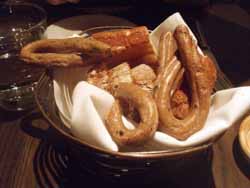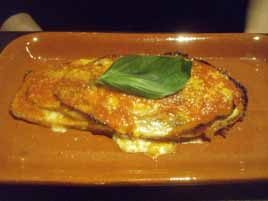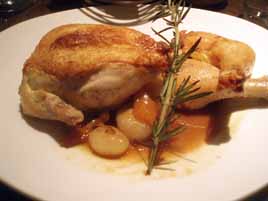Shalezeh
 Friday, February 5, 2010 at 05:31PM
Friday, February 5, 2010 at 05:31PM  Most of the New York City restaurants with Michelin stars are sensible choices, but there are a few head-scratchers. In December we reviewed Rhong-Tiam, which has since moved to a new location after being shut down by the health department.
Most of the New York City restaurants with Michelin stars are sensible choices, but there are a few head-scratchers. In December we reviewed Rhong-Tiam, which has since moved to a new location after being shut down by the health department.
Then there’s Shalizar, which recently changed its name to Shalezeh, to avoid confusion with an unrelated Shalizaar in California. It’s a rather half-hearted name change, as the menu, the signage, and the credit card bill all still say “Shalizar.”
Like Rhong-Tiam, Shalizar Shalezeh had received no critical attention whatsoever that would suggest it is Michelin material. It has been open since mid-2008, and most of the city’s major publications haven’t reviewed it at all. Its food rating on Zagat is a mere 21 (that is, just a shade above mediocre).

Did Michelin find a hidden gem that all of the other critics had missed? I am afraid not. Shalizar Shalezeh is the kind of moderately diverting place where you’d be happy to drop in if it were nearby, but it is not even remotely close to the kind of “destination restaurant” normally associated with a Michelin star.
The atmosphere is at least comfortable and pleasant, the service friendly and attentive. Prices are modest, with appetizers $8 and under, and entrées mostly $23 and under. Our food bill for two was just $56, and we had plenty to eat for that amount. The warm, house-made bread (right) was wonderful.
We do not have much expertise in Persian cuisine, so we cannot rate Shalizar Shalezeh on authenticity. The menu is heavy on eggplant, yogurts, chicken, and lamb—all very sensible. But are halibut and filet mignon Persian specialties? There we are less sure.


We ordered a tasting of three salads ($14; above left), which would be $6–7 if ordered separately. These are the Shirazi (cucumber, tomato, onion, parsley, and citrus jus), the Tabuleh (diced tomatoes, cracked wheat, chopped parsley, mint, olive oil, and citrus jus), and the Labu (marinated beets, tomato, feta cheese, wild berry, and cherry vinaigrette). I liked the Labu best, but I have a weakness for beets. The Shirazi seemed to be missing the tomatoes that the menu promised, and it tasted a bit monotonous.
We were comped an Olivieh Salad (above right), made with pickles, chicken, potato, English peas, cucumber, eggs, and mayonaise. In short, it was a terrific chicken salad. It would have made a first-class sandwich.


Lamb Kebab ($16; above left) and the Vermont Lamb Shank ($20; above right) both felt under-seasoned to us. The kebab was nicely cooked to a medium rare, and the meat was tender, but there wasn’t much going on besides that. However, we loved the basmati rice with lentil, saffron, and raisin.
The lamb shank was properly braised, but we couldn’t make out the alleged Middle Eastern herbs, and without them it tasted flat. The raisin couscous were more interesting.
We enjoyed most of our meal, especially at these prices, and would happily return when we have business in the neighborhood. Those expecting Michelin-class culinary fireworks will be disappointed.
Shalezeh (1420 Third Avenue between 80th–81st Streets, Upper East Side)
Food: *
Service: *½
Ambiance: *½
Overall: *









